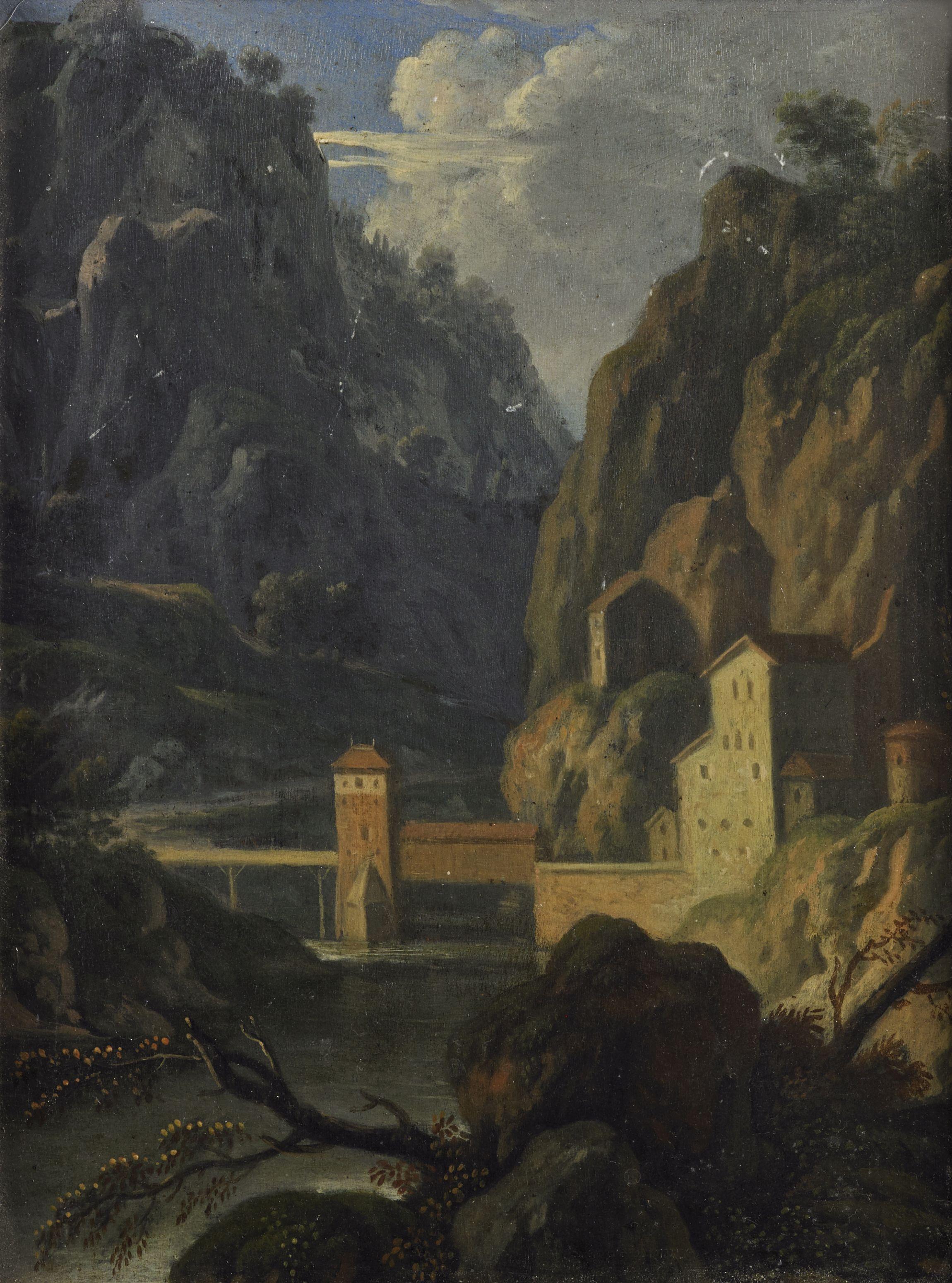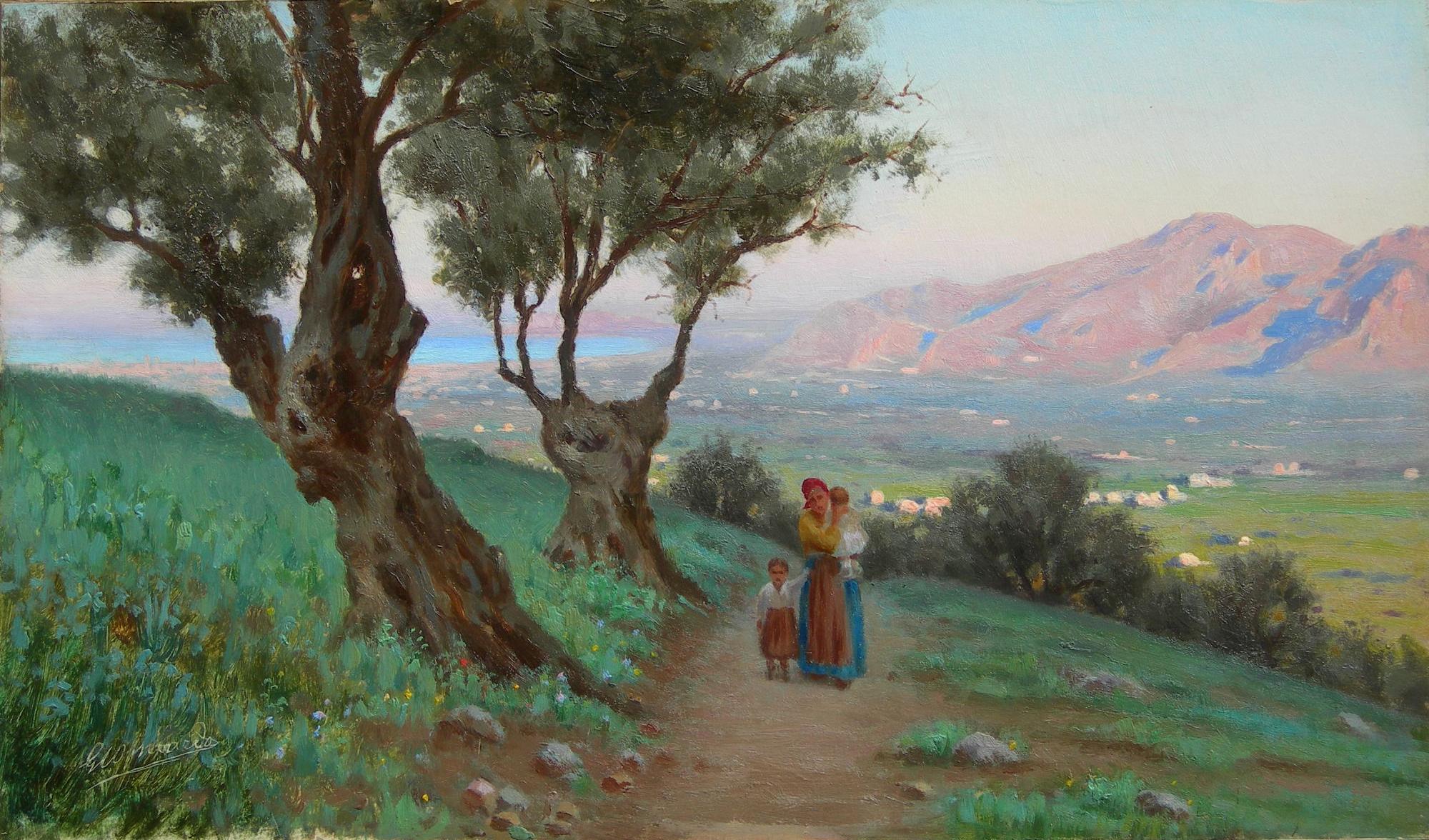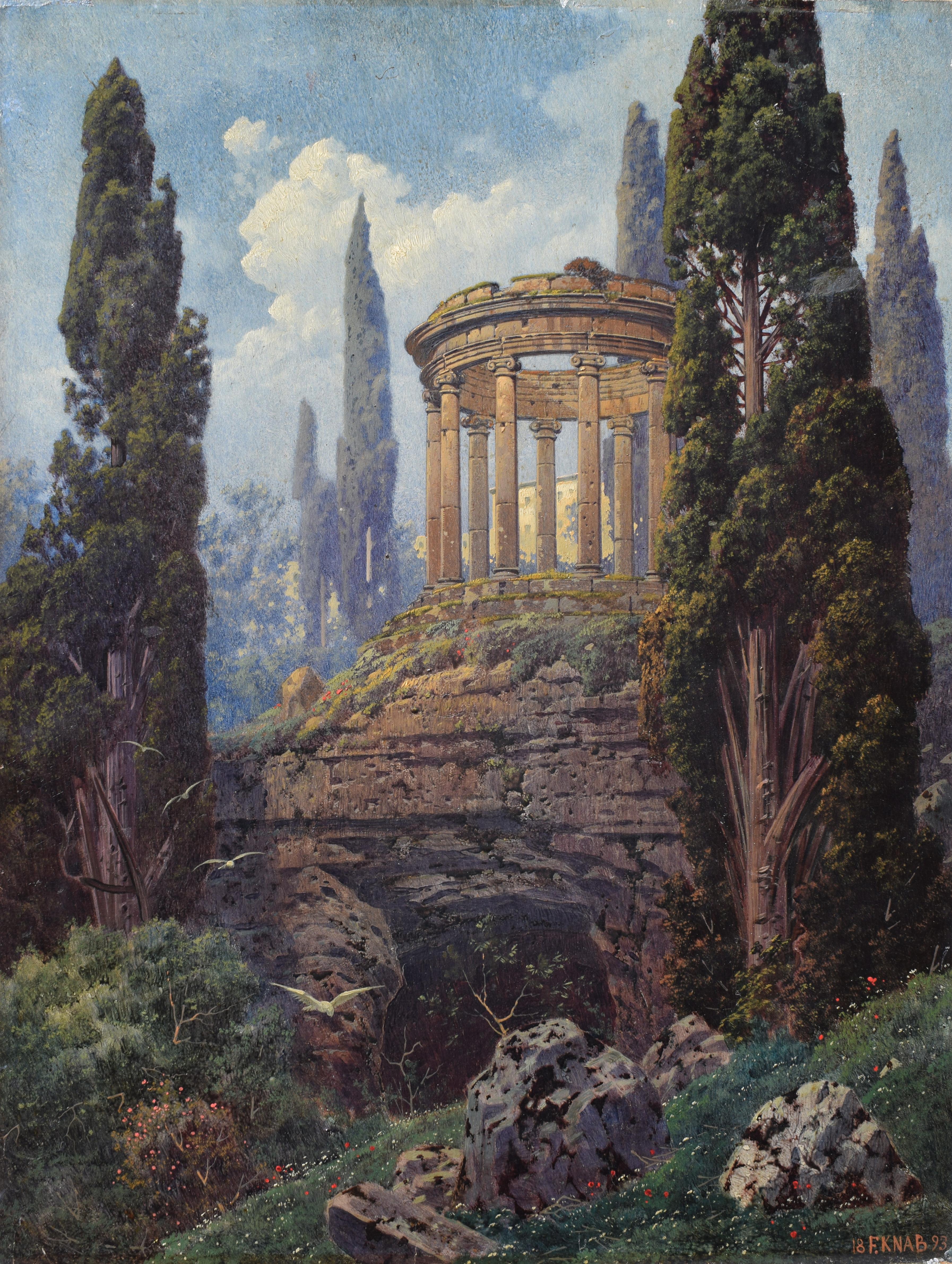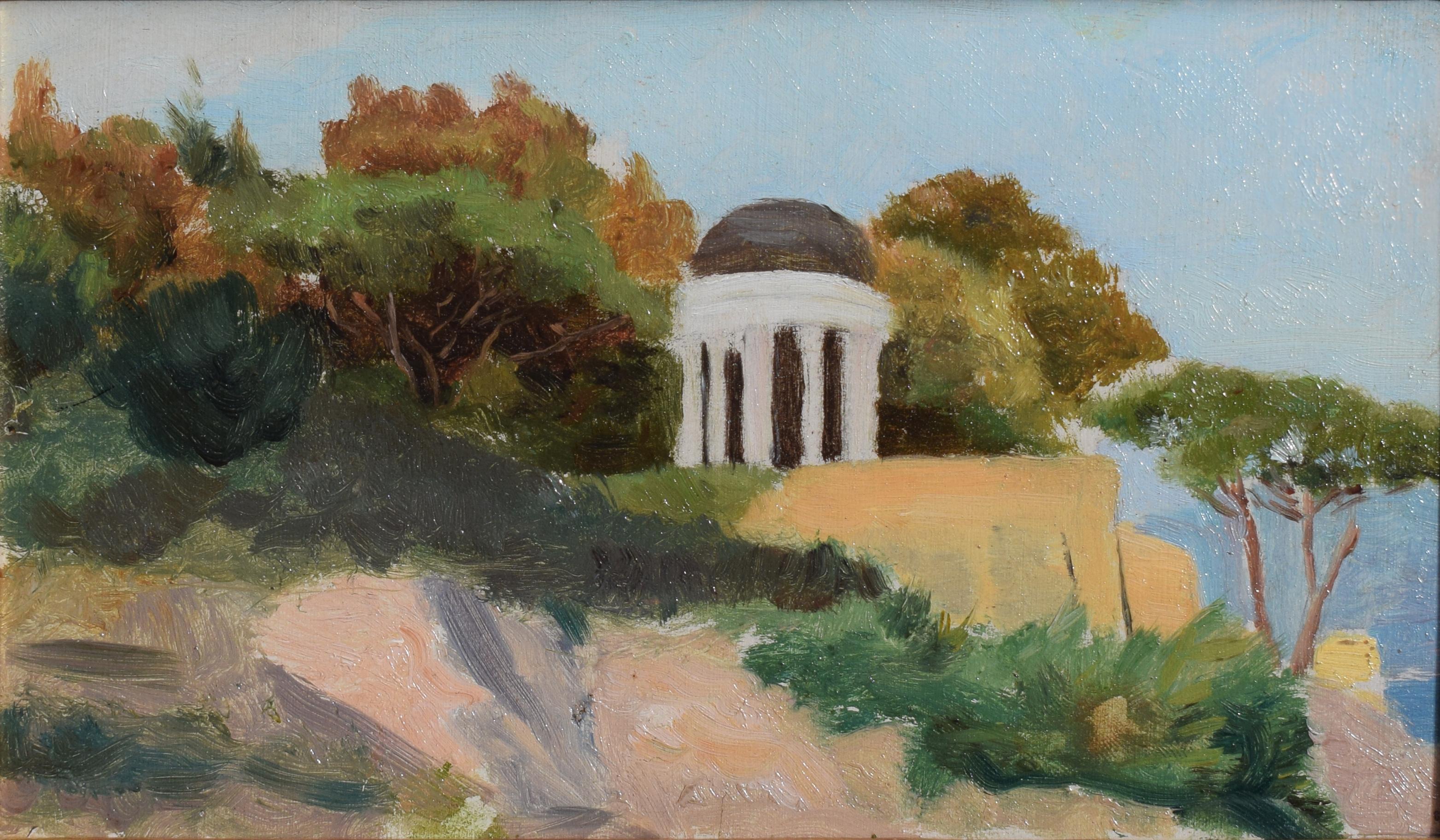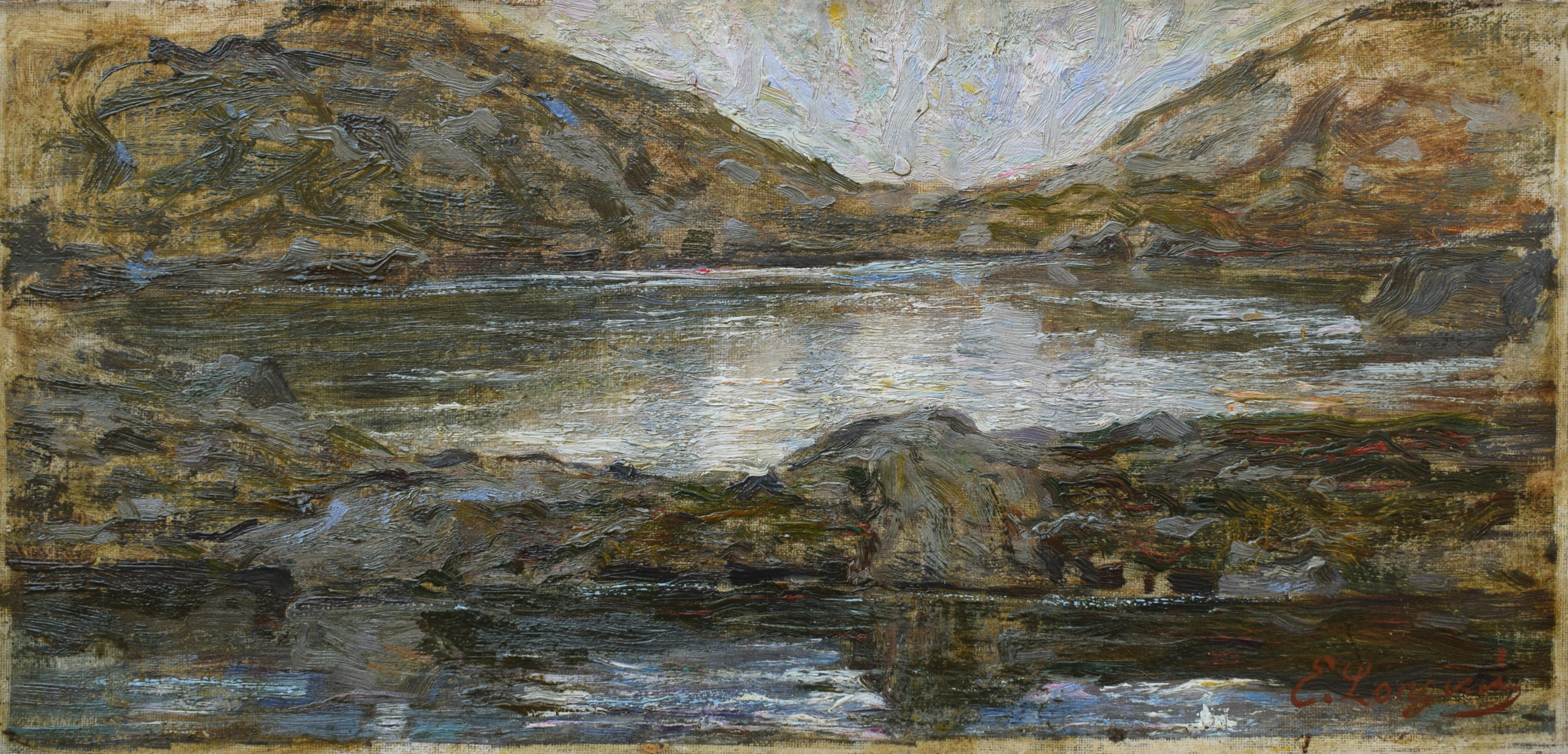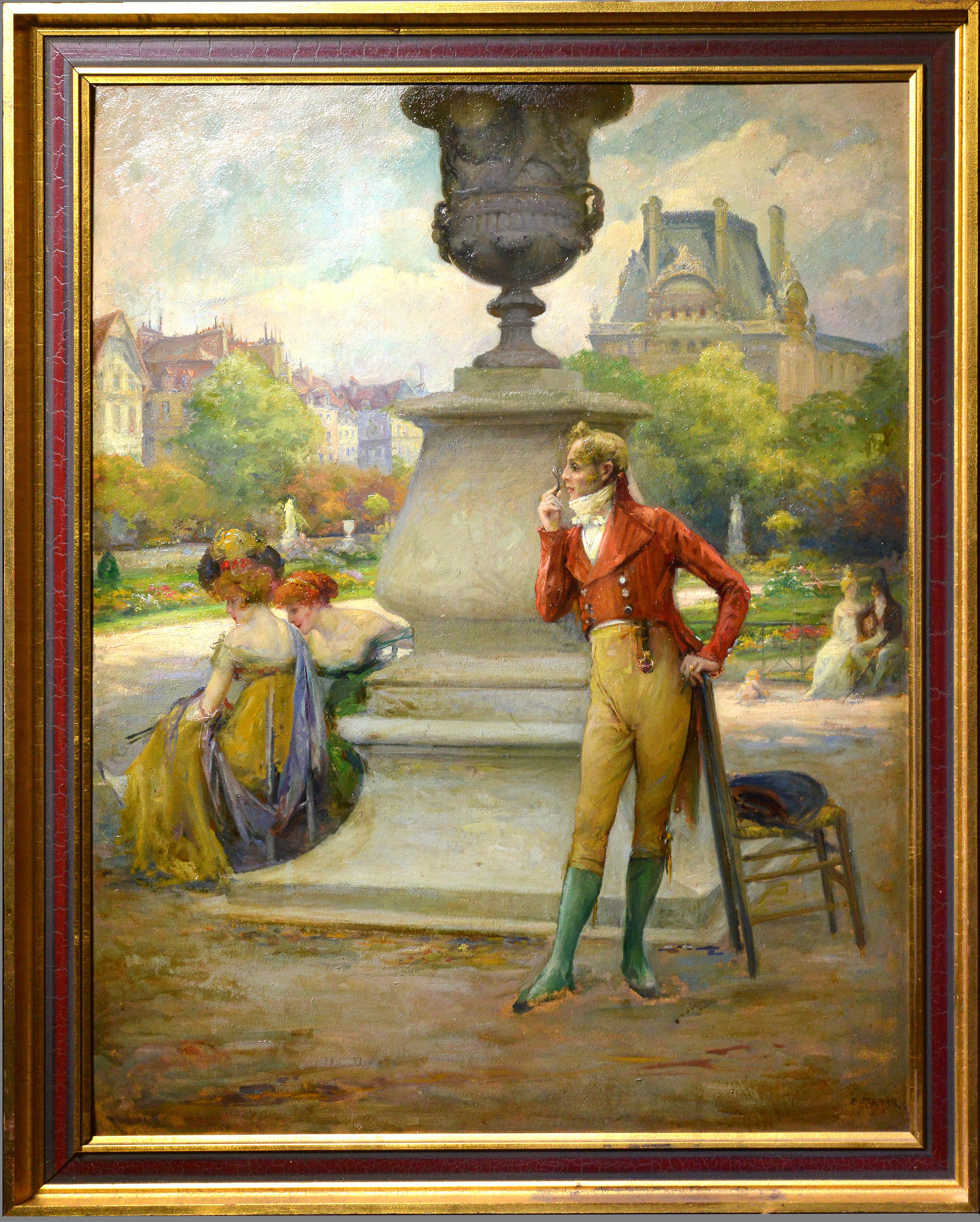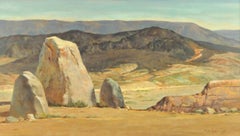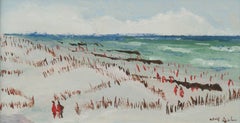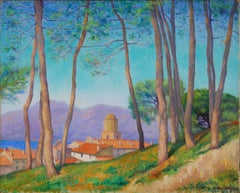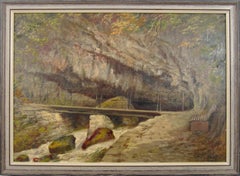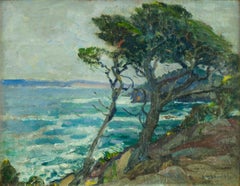
Point Lobos, California
View Similar Items
Want more images or videos?
Request additional images or videos from the seller
1 of 6
William John EdmondsonPoint Lobos, Californiac. 1925
c. 1925
About the Item
- Creator:William John Edmondson (1868-1966, American)
- Creation Year:c. 1925
- Dimensions:Height: 10.5 in (26.67 cm)Width: 13.5 in (34.29 cm)
- Medium:
- Period:
- Condition:Frame: Period McBeth Gallery style frame.
- Gallery Location:Fairlawn, OH
- Reference Number:Seller: FA86111stDibs: G130708140177
About the Seller
5.0
Recognized Seller
These prestigious sellers are industry leaders and represent the highest echelon for item quality and design.
Platinum Seller
These expertly vetted sellers are 1stDibs' most experienced sellers and are rated highest by our customers.
Established in 1978
1stDibs seller since 2013
711 sales on 1stDibs
Typical response time: 1 hour
Associations
International Fine Print Dealers Association
More From This SellerView All
- Blue Horizon (near Sante Fe, New Mexico)By Elmer Ladislaw NovotnyLocated in Fairlawn, OHBlue Horizon (Near Sante Fe, New Mexico) Signed by the artist lower right (see photo) Oil on board, 16 x 27 5/8 inches Condition: Very good. Housed in the or...Category
1970s Realist Paintings
MaterialsOil, Board
- Jersey Shore IIIBy Adolf Arthur DehnLocated in Fairlawn, OHJersey Shore III Casein on Masonite, 1967 Signed lower right (see photo) Initialed, dated and titled verso Provenance: Estate of the artist Virginia Dehn (the artist's widow) Dehn Quests Created on location on the Jersey Shore. The Jersey Shore was the main playground for thousand to escape the summer heat of New York. This small painting shows Dehn's mastery of patterning color to depict movement and recreation. Part of a suite of paintings done on this theme. Within a year of it's creation, Dehn dies from a heart attack. Casein on Masonite Condition: Excellent Image: 6 x 11" Frame: 9 3/8 x 14 1/2" Adolf Dehn, American Watercolorist and Printmaker, 1895-1968 Adolf Dehn was an artist who achieved extraordinary artistic heights, but in a very particular artistic sphere—not so much in oil painting as in watercolor and lithography. Long recognized as a master by serious print collectors, he is gradually gaining recognition as a notable and influential figure in the overall history of American art. In the 19th century, with the invention of the rotary press, which made possible enormous print runs, and the development of the popular, mass-market magazines, newspaper and magazine illustration developed into an artistic realm of its own, often surprisingly divorced from the world of museums and art exhibitions, and today remains surprisingly overlooked by most art historians. Dehn in many regards was an outgrowth of this world, although in an unusual way, since as a young man he produced most of his illustrative work not for popular magazines, such as The Saturday Evening Post, but rather for radical journals, such as The Masses or The Liberator, or artistic “little magazines” such as The Dial. This background established the foundation of his outlook, and led later to his unique and distinctive contribution to American graphic art. If there’s a distinctive quality to his work, it was his skill in introducing unusual tonal and textural effects into his work, particularly in printmaking but also in watercolor. Jackson Pollock seems to have been one of many notable artists who were influenced by his techniques. Early Years, 1895-1922 For an artist largely remembered for scenes of Vienna and Paris, Adolf Dehn’s background was a surprising one. Born in Waterville, Minnesota, on November 22, 1895, Dehn was the descendent of farmers who had emigrated from Germany and homesteaded in the region, initially in a one-room log cabin with a dirt floor. Adolf’s father, Arthur Clark Dehn, was a hunter and trapper who took pride that he had no boss but himself, and who had little use for art. Indeed, during Adolf’s boyhood the walls of his bedroom and the space under his bed were filled with the pelts of mink, muskrats and skunks that his father had killed, skinned and stretched on drying boards. It was Adolf’s mother, Emilie Haas Dehn, a faithful member of the German Lutheran Evangelical Church, who encouraged his interest in art, which became apparent early in childhood. Both parents were ardent socialists, and supporters of Eugene Debs. In many ways Dehn’s later artistic achievement was clearly a reaction against the grinding rural poverty of his childhood. After graduating from high school in 1914 at the age of 19—an age not unusual in farming communities at the time, where school attendance was often irregular—Dehn attended the Minneapolis School of Art from 1914 to 1917, whose character followed strongly reflected that of its director, Munich-trained Robert Kohler, an artistic conservative but a social radical. There Dehn joined a group of students who went on to nationally significant careers, including Wanda Gag (later author of best-selling children’s books); John Flanagan (a sculptor notable for his use of direct carving) Harry Gottlieb (a notable social realist and member of the Woodstock Art Colony), Elizabeth Olds (a printmaker and administrator for the WPA), Arnold Blanch (landscape, still-life and figure painter, and member of the Woodstock group), Lucille Lunquist, later Lucille Blanch (also a gifted painter and founder of the Woodstock art colony), and Johan Egilrud (who stayed in Minneapolis and became a journalist and poet). Adolf became particularly close to Wanda Gag (1893-1946), with whom he established an intense but platonic relationship. Two years older than he, Gag was the daughter of a Bohemian artist and decorator, Anton Gag, who had died in 1908. After her husband died, Wanda’s mother, Lizzi Gag, became a helpless invalid, so Wanda was entrusted with the task of raising and financially supporting her six younger siblings. This endowed her with toughness and an independent streak, but nonetheless, when she met Dehn, Wanda was Victorian and conventional in her artistic taste and social values. Dehn was more socially radical, and introduced her to radical ideas about politics and free love, as well as to socialist publications such as The Masses and The Appeal to Reason. Never very interested in oil painting, in Minneapolis Dehn focused on caricature and illustration--often of a humorous or politically radical character. In 1917 both Dehn and Wanda won scholarships to attend the Art Students League, and consequently, in the fall of that year both moved to New York. Dehn’s art education, however, ended in the summer of 1918, shortly after the United States entered World War I, when he was drafted to serve in the U. S. Army. Unwilling to fight, he applied for status as a conscientious objector, but was first imprisoned, then segregated in semi-imprisonment with other Pacifists, until the war ended. The abuse he suffered at this time may well explain his later withdrawal from taking political stands or making art of an overtly political nature. After his release from the army, Dehn returned to New York where he fell under the spell of the radical cartoonist Boardman Robinson and produced his first lithographs. He also finally consummated his sexual relationship with Wanda Gag. The Years in Europe: 1922-1929 In September of 1921, however, he abruptly departed for Europe, arriving in Paris and then moving on to Vienna. There in the winter of 1922 he fell in love with a Russian dancer, Mura Zipperovitch, ending his seven-year relationship with Wanda Gag. He and Mura were married in 1926. It was also in Vienna that he produced his first notable artistic work. Influenced by European artists such as Jules Pascin and Georg Grosz, Dehn began producing drawings of people in cafes, streets, and parks, which while mostly executed in his studio, were based on spontaneous life studies and have an expressive, sometimes almost childishly wandering quality of line. The mixture of sophistication and naiveté in these drawings was new to American audiences, as was the raciness of their subject matter, which often featured pleasure-seekers, prostitutes or scenes of sexual dalliance, presented with a strong element of caricature. Some of these drawings contain an element of social criticism, reminiscent of that found in the work of George Grosz, although Dehn’s work tended to focus on humorous commentary rather than savagely attacking his subjects or making a partisan political statement. Many Americans, including some who had originally been supporters of Dehn such as Boardman Robinson, were shocked by these European drawings, although George Grocz (who became a friend of the artist in this period) admired them, and recognized that Dehn could also bring a new vision to America subject matter. As he told Dehn: “You will do things in America which haven’t been done, which need to be done, which only you can do—as far at least as I know America.” A key factor in Dehn’s artistic evolution at this time was his association with Scofield Thayer, the publisher of the most notable modernist art and poetry magazine...Category
1960s American Modern Landscape Paintings
MaterialsOil
- The Port of San TropezBy Alexander L. WarshawskyLocated in Fairlawn, OHThe Port of San Tropez Oil on canvas, c. 1920 Signed lower right corner (see photo) Condition: Excellent, professionally cleaned Image/Canvas size: 25 3/4 x 32 inches Frame size: 30...Category
1920s American Impressionist Landscape Paintings
MaterialsOil
- Long Light Notre DameBy Robert HallowellLocated in Fairlawn, OHLong Light Notre Dame Oil on canvas, 1931 Note: the painting is NOT framed Signed and dated lower right Condition: Excellent Conservation by Monica Radecki, South Bend Canvas size: ...Category
1930s American Impressionist Landscape Paintings
MaterialsOil
- Nashville at SunriseBy Louis Oscar GriffithLocated in Fairlawn, OHNashville at Sunrise Oil on canvas, mounted to archival resin board Signed by the artist lower left Provenance: Estate of the artist By decent A gorgeous Indiana Impressionist oil painting, done "plein air" (on location, outdoors) Born in Greencastle, Indiana, Griffith grew up in Dallas, Texas where Texas artist and teacher Charles Franklin Reaugh recognized young “Griff’s” artistic talent. At age 18, Griffith moved to St. Louis where he attended the St. Louis School of Fine Arts. In 1895, he moved to Chicago where he worked making color prints for the firm Barnes and Crosby. He attended the Art Institute of Chicago and during a brief stay in New York, the National Academy of Design. A successful commercial artist with a studio in the Chicago Loop, Griffith was a member and president of the Chicago Palette and Chisel Club. He made his first trip to Brown County...Category
1920s Landscape Paintings
MaterialsOil
- Untitled (also known as "1811 THE BACKWOODSMAN'S CHRISTMAS")Located in Fairlawn, OHUntitled (also known as "1811 THE BACKWOODSMAN'S CHRISTMAS") Oil on canvas, c. 1875-1925 Unsigned Provenance: Found in Ohio A charming American naive no...Category
1870s Outsider Art Landscape Paintings
MaterialsOil
You May Also Like
- 17th Landscape Flemish School Houses Bridge Trees Oil on Canvas Green BrownLocated in Sanremo, ITPainting, oil on panel, measuring 20 x 15 without frame and 35 x 30 with frame, depicting a landscape with a beautiful perspective and houses arranged on a mountain of the Flemish sc...Category
Late 17th Century Flemish School Landscape Paintings
MaterialsOil, Board
- Pieter Fraterman - Orchard - Post-Impressionist Dutch Oil Painting, c. 1950By Pieter FratermanLocated in Meinisberg, CHPieter Fraterman (Dutch, * 12th April 1910, Den Haag – † 18th March 1969, Den Haag) In the Orchard Garden • Oil on Fibre board ca. 50 x 60 cm • Frame ca. 64 x 73 cm • Signed lower right Pieter Fraterman begann his studies by attending the evening classes held by H. Meijer and J. Giessen at the Royal Academy of Art in Den Haag from 1930 to 1936. In a second period during the war Pieter continued his studies at the Royal Academy from 1941 to 1944 under H. Meijer, H. van Dam and W. Schrofer. Pieter received plenty of recognition during his career. In 1937 he received a Royal grant, the Jacob Maris...Category
Mid-20th Century Post-Impressionist Landscape Paintings
MaterialsBoard, Oil
- Rudolf Johann Weiss ( 1846 – 1933 ) Twannbach Cave Oil Painting Switzerland 1926By Rudolf Johann WeissLocated in Meinisberg, CHRudolf Johann Weiss (Swiss, * 3.9.1846 Basel, † 17.4.1933 Biel) Die Twannbachgrotte/Twannbachschlucht bei Twann, Biel, Schweiz (= The Twannbach Cave/Twannbach Canyon by Douanne, Bie...Category
1920s Post-Impressionist Landscape Paintings
MaterialsOil, Board
- Ralph R. Stubbs - Low tide at Sunset - English 19th Century Marine Oil PaintingBy Ralph Reuben / Ruben StubbsLocated in Meinisberg, CHRalph Reuben/Ruben Stubbs (English, 1824-1879) Low Tide at Sunset • 19thC Oil on artist board (card) ca. 21 x 36.5 cm • Signed bottom right and verso Biografie: Stubbs Ralph Reu...Category
1860s Impressionist Landscape Paintings
MaterialsOil, Cardboard
- Dmitry Alexandrovich Kustanovich (1970) Minsk Belarus Pointilist Spatial RealismBy Dmitry KustanovichLocated in Meinisberg, CHDmitry Alexandrovich Kustanovich (Belarusian, 29.3.1970) Lively Urbane Landscape on a rainy day in Minsk , Belarus • Oils on canvas, mounted on to fiberboard, ca. 27 x 35 cm • Fram...Category
Late 20th Century Pointillist Landscape Paintings
MaterialsCanvas, Oil, Fiberboard
- View of SienaBy Bruno CroattoLocated in Roma, RMBruno Croatto (Trieste 1875 - Rome 1948), View of Siena (1941) Oil painting on panel 50 x 60 cm signed, located Siena and dated 1941.Category
1940s Other Art Style Landscape Paintings
MaterialsOil, Board
